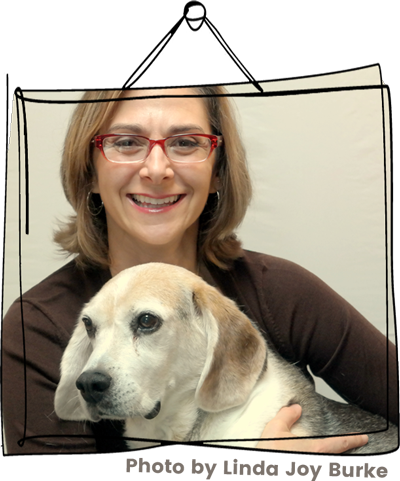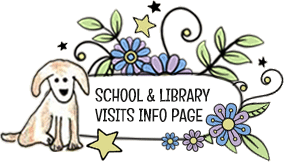
Matt Forrest Esenwine is hosting Poetry Friday at Radio, Rhythm & Rhyme.
Happy Poetry Friday, everyone. Despite the social distancing, book festival cancellations, and school closures, I’m glad we can meet online as usual to share our love of poetry.
2020 is an important year for me. Ten years ago, in February 2010, my first book was published. You can read about Mountain, Log, Salt, and Stone (CityLit Press, 2010) in Part 1 of this series.
For the next few weeks, I’m looking back at each of the six books I’ve published in the last ten years — from MLS&S and my latest middle grade novel, A Place at the Table, which comes out in May. From each one, I’ll highlight a poem.
Last time (Part 2 of this series) I talked about Life in Me Like Grass on Fire: Love Poems, the anthology that I edited for Maryland Writers Association.
Following that publication, I became editor of a Maryland-based art and literary journal, Little Patuxent Review. This volunteer position taught me so many things, including how to put together poems, stories, and essays so the order of pieces flow well for the reader.
During my five years on the LPR editorial staff (3 as editor in chief, 2 as poetry editor), I continued to work on book projects.
Book number three was commissioned by the Maryland State Arts Council. Christine Stewart, my then-administrator at MSAC’s Artist-in-Residence program, introduced me to another poet-in-the-schools. Virginia Crawford and I were tasked with creating a book of student poems that came out of poetry residencies.
But Ginny and I wanted to tweak that idea. We invited eight MSAC visiting poets (both of us and six others) to write up their favorite poetry workshops for the book. Each poet would have a chapter with their workshop description, plus a handful of student responses as models.
The idea was that this book, which came out in a limited print run in 2012 (CityLit Press), would be available as a free resource online. Educators could go to the MSAC website, view the PDF of the book, and replicate the workshops in their classrooms.
The book became VOICES FLY: Exercises and Poems from the Maryland State Arts Council Artist-in-Residence Program. I am happy to say that, after a hiatus, it’s available at the MSAC website once again.
I thought this would be a perfect time to share VOICES FLY. Many of the writing prompts in this book can easily be shared with students virtually if your school has gone online.
Today, I’m featuring the workshop for our youngest writers, created by poet and performer MiMi Zannino. This is an excerpt from Chapter 1: Word Pond, page 7-17. Response poems by children are at the end of the post.
Fill a Word Pond with Images, Then Go Fish
— MiMi Zannino
Early Elementary and Developing Writers
This lesson creates a whole class Word Poem and provides a Word Pond from which children can “fish” while writing an independent poem.
First, I ask students, “What is the difference between a word and an image?” An image creates a picture in your mind and it awakens your senses. We review the five senses, then discuss whether the word “the” is an image or the word “sunrise” is an image? Younger students are challenged rather than
overwhelmed when I use guided questions to generate poems.
1. Write your favorite season of the year: winter, spring, summer, or fall. (Spell the choices on the board or use other visual tools.)
2. Close your eyes and watch your season come to life, then write the first word or image that comes to your mind on the next line of your paper.
3. Now, close your eyes again and see an image of the last word you wrote—what picture comes to your mind?—write it on the next line.
(Repeat steps two and three about five more times, then guide students to specific images by asking the next set of questions.)
4. Close your eyes and imagine your favorite bird: visualize its colors, feathers, beak, talons. Now write the name of the bird on the next line.
5. Watch the action of the bird and write down one or more verbs or action words that describe the way the bird is moving.
6. Close your eyes and imagine your favorite sea creature. Write it.
7. Watch the action of your sea creature and write a word that describes the way it moves underwater.
8. Close your eyes and imagine your favorite body of water: pond, lake, stream, ocean. Write it.
9. Close your eyes and imagine your favorite time of day: sunrise, noon, sunset, dusk, midnight, twilight, moonlight.
10. Close your eyes and write the name of someone who is with you in the poem: grandma, uncle, cousin, pet.
(Add other “image” prompts appropriate to the grade level, ability level, and connections to curriculum.)
This writing exercise helps children track their thoughts and link one image to the next. It is also helpful for students to form a thought, write it on paper, and create a flow of ideas before they evaporate.
The Word Pond workshop can be connected to a specific part of the school curriculum, such as a science unit on butterfly life cycles. I direct students to images from the content they learned in science, which we list in their word pond: butterfly species, action verbs to describe their motion, plants that butterflies eat and on which they lay eggs, butterfly habitats, colors that
describe their wings, and other images in nature that share the colors of a butterfly.
WORD POND
Monarch
Tiger Swallowtail
Buckeye
flutter
dip
bask
zinnia
milk weed
clover
sunrise
sunset
Students can write these poems in the “voice” of the butterfly. With some groups, I focus the students’ attention on the mood butterflies conjure in our minds. Students will usually include “a calm mood” among others and can use an opening line such as, “When I want to be calm.” Other groups write their butterfly poems as a guessing game.
Younger students often need a handout that guides writing and keeps them on track. This visual aid can be used for all students, or just those who are not yet able to write independently.
Can You Guess? (couplets)
I have two antennae that point _______________.
(choose: east and west OR right and left).
I have four wings the color of ________________
____________________________________.
I have six legs as thin as ___________________
____________________________________
(choose a simile).
I drink nectar from a _______________ blossom.
I _______________ and _________________
(write two action verbs) over the ______________
______________________ (write a habitat).
I whisper to the world: ____________________
(write your message to the world).
I am a _________________________ butterfly.
(Write your butterfly species).
Voice of Butterfly
I am a Silver-spotted Skipper butterfly
fluttering beautifully around sunflowers.
I bask on a rock in the afternoon.
At dusk, I close my eyes and rest.
Josias D. Bordon-Alvarez, Grade 2
Laurel Woods Elementary School, Howard County
Teacher: Maria Pisca, 2011
Voice of a Butterfly
When I want to be calm,
I become a Monarch butterfly.
I flutter my orange and black and
white wings.
I dip my straw into a
milkweed blossom.
I dance around a zinnia.
I lay eggs under a tulip leaf.
I bask on grass under
the sunshine.
Za’Daiya Harrod, Grade 2
Laurel Woods Elementary School, Howard County
Teacher: April Williams, 2011
I hope you enjoyed this sample from VOICES FLY. The book is organized by age group: Workshops for younger students are in the first few chapters. Those appropriate for middle through high school are toward the end of the book.
In the “Celebrating 10 Years of Books” series:
Part 1: Mountain, Log, Salt, and Stone







I’m so glad you shared Voices Fly! What a great way for everyone to focus on images and begin a poem. I look forward to reading more. Thanks, Laura.
Thanks, Janice. Yes, I think MiMi’s writing exercise is so smart. How much fun would it be to play “go fish” in a word pond — especially for beginning writers?
I needed this today: “Younger students are challenged rather than
overwhelmed when I use guided questions to generate poems.”
Thank you, Laura, and congratulations on 10 years of beautiful books! xo
Thanks, Irene. Yes, I love the way MiMi set this workshop up to help young writers play and feel successful.
Congratulations on the book, Laura! Sounds like something our young poets can definitely utilize…I always find that helping students >think< is the first step to helping them write poetry. This does just that!
Thanks, Matt. This book came out in 2012, but I’m thrilled that the arts council is making it available as a free download once again.
These are amazing! Great lesson plan and student poems. I’m excited to go download this book once I’m on my laptop. Thanks for sharing this, Laura!
Thanks, Laura. This was a wonderful project to work on. Ginny and I enjoyed the collaboration and have remained friends ever since!
[…] Laura Shovan is sharing news about her new book, a collection of poems and lessons entitled “Voices Fly.” […]
Laura: This is a lovely lesson, so beautifully scaffolded and oriented. This will aid children in writing poems they will be proud of. Thank you so much for sharing, and kudos on your publications.
Hi, Karen. MiMi is a veteran of our visiting poets program. Her understanding of how to encourage writing from young children shows in this activity.
Thanks for these highlights, Laura! What a great book!
Thanks, Mary Lee. Ginny and I are proud of it and so glad that it’s available online once again.
This, plus I’m sure the others, will be so helpful to teachers, Laura. I’ll share the link with former colleagues who I’m sure will also pass it on. Even my older students would have liked the idea of fishing in a word pond!
Thanks, Linda. Isn’t the word pond a fun idea! We should use it for our February poetry project next year.
This lesson is so helpful and easy to follow. I’m excited to try it myself. Thanks for sharing.
I’m so glad you’re going to try it, Rose. Let me know how it goes.
Laura, this is a gold mine of a post! Thank you for your memory walk in publishing, the resources and the pure dedication you’ve given to poetry writing for all. I’m just wowed! This post is a keeper for sure. And, I’ll be sharing it with educators I know. Thanks again.
Hi, Linda. Thanks for reading the series. I’m especially grateful for all of the community projects and publications that I’ve been able to work on.
Great exercises and beautiful, keen, and sensitive butterfly poems by these two students Laura, thanks for sharing them and your book!
Thanks, Michelle. I can imagine these poems shared with some of your butterfly art.
Love the Word Pond. Definitely going to check out the book on the website. Thanks for sharing the link! I’m eagerly awaiting Place at the Table. I have my copy pre-ordered!
Hi, Carol! Thanks for supporting the new book.
Voices Fly is filled with some wonderful, ready to use workshops. I hope you enjoy it.
If I could do it all again, I think I might choose to raise my children in Maryland so that they could have benefited from the in-school arts education that the state offers! Every child needs a Mrs. Poems in their life. 🙂
We didn’t plan to move to Maryland 20+ years ago, but it’s been a wonderful place to raise our family and for me to grow as Mrs. Poems!
Thank you for sharing this amazing resource, Laura! I love the word pond lesson and will definitely use it with students. In the meantime, I’ll be trying it myself.
Thanks, Catherine. I think I’m going to try it myself, too!